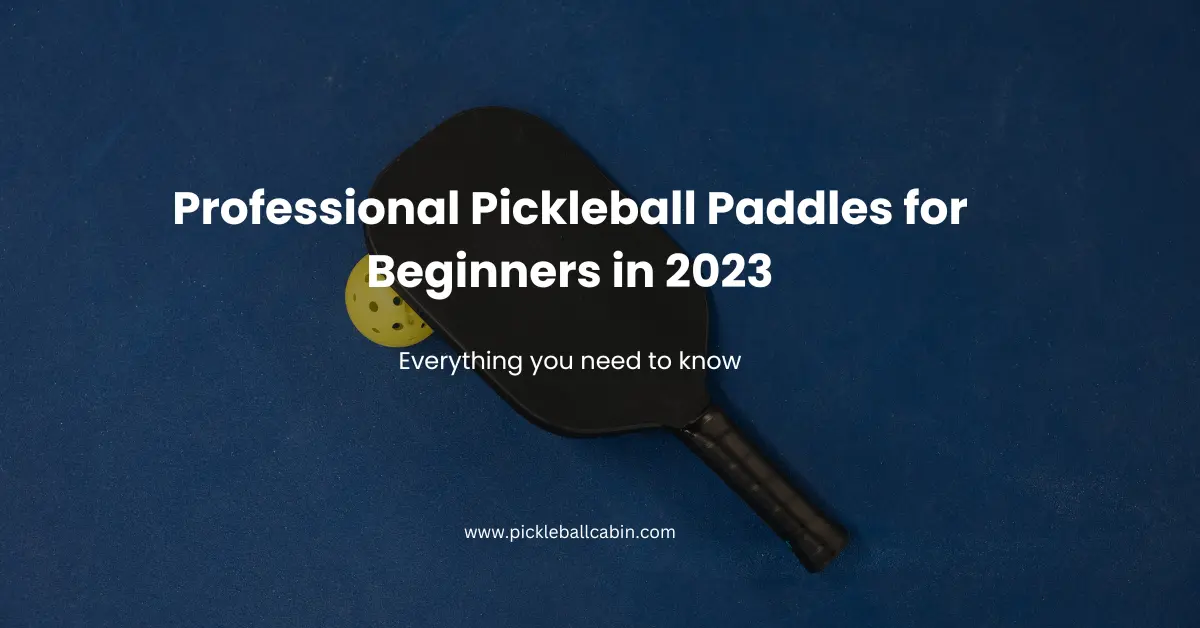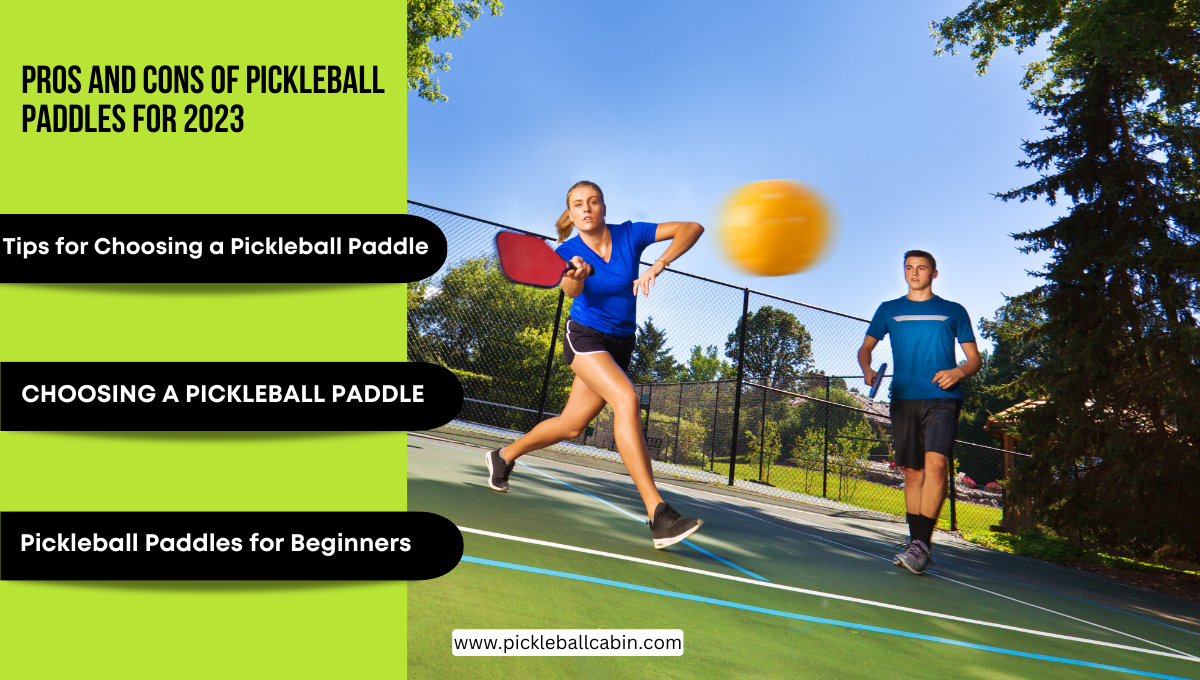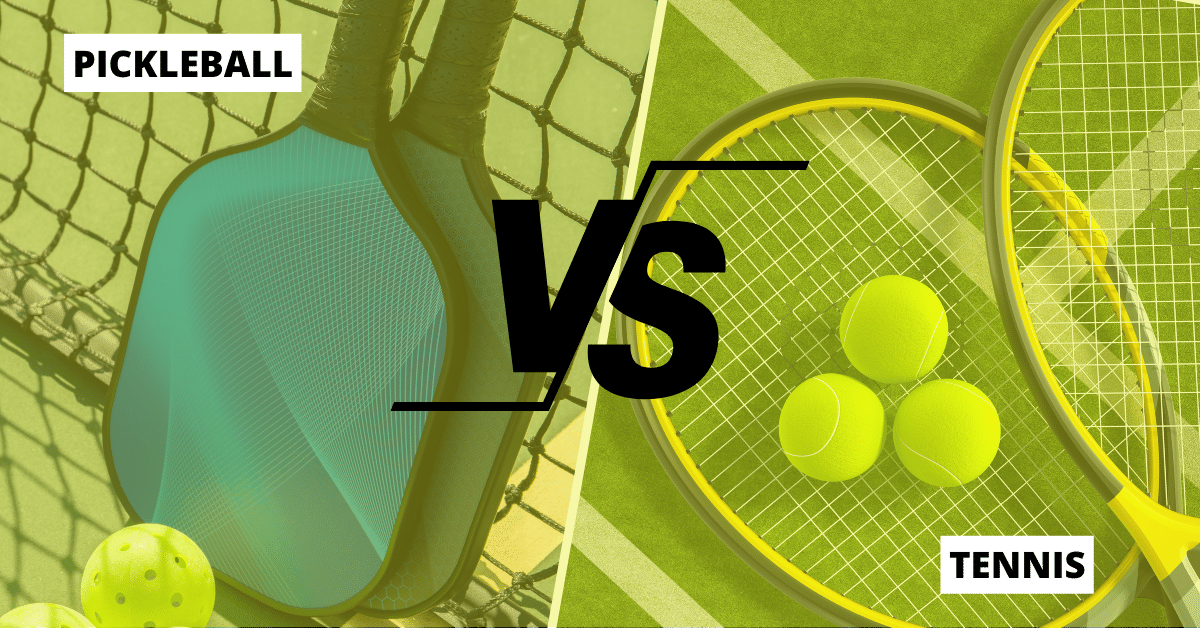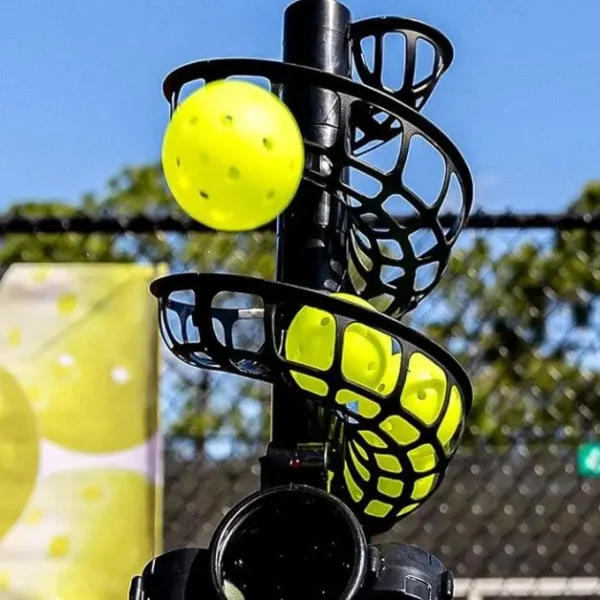Carbon Fiber Pickleball Paddle
With their unparalleled mix of touch, power, and lightweight maneuverability, carbon fiber pickleball paddles represent the pinnacle of paddle technology and performance, pickleball enthusiasts are constantly on the lookout for high-quality equipment to enhance their performance on the court.
Let’s explore why more players are switching to these advanced composite paddles to up their game, also we will delve into the world of carbon fiber pickleball paddles, exploring their benefits and why they are a worthy investment for any pickleball player.
Understanding Carbon Fiber
Before diving into the specifics of carbon fiber pickleball paddles, it’s essential to understand what carbon fiber is and why it has become a popular choice in various industries, including sports equipment manufacturing. Carbon fiber is a lightweight, yet incredibly strong material that is composed of extremely fine fibers. These fibers are primarily made from carbon atoms bonded together in a crystalline arrangement.
Carbon fiber is renowned for its exceptional strength-to-weight ratio, making it ideal for use in high-performance applications. It offers superior stiffness, durability, and resistance to impact, making it an excellent choice for pickleball paddles. The use of carbon fiber in pickleball paddle construction allows for enhanced control, power, and maneuverability on the court.
Benefits of Carbon Fiber Pickleball Paddles
Lightweight and Maneuverable:
Carbon fiber paddles are significantly lighter than their traditional counterparts, which provides players with increased maneuverability and control. The lightweight nature of carbon fiber paddles allows players to react quickly to shots, making it easier to achieve the desired ball placement. This advantage is especially crucial in pickleball, where speed and agility are essential.
Also Read; Lightweight pickleball paddle
Enhanced Power:
Carbon fiber’s stiffness and strength contribute to increased power during shots. The paddle’s rigid structure helps transfer energy efficiently from the player’s swing to the ball, resulting in more powerful shots. This feature is particularly beneficial for aggressive players who rely on powerful shots to dominate the game. With a carbon fiber paddle, players can generate more force and achieve greater shot distance.
Improved Control:
Carbon fiber paddles offer exceptional control due to their lightweight and responsive nature. Players can easily manipulate the paddle to execute precise shots, making it easier to place the ball precisely where desired. The paddle’s responsiveness allows for better shot accuracy and consistency. The combination of control and power makes carbon fiber paddles suitable for players of all skill levels.
You may also Like this; Well Balanced Pickleball Paddle | Best Of Both Worlds In Power And Control
Durability:
Carbon fiber paddles are highly durable and resistant to wear and tear. This is particularly advantageous for players who engage in frequent gameplay or participate in competitive events. The robust construction ensures that the paddle can withstand intense play without compromising its performance or longevity. With a carbon fiber paddle, players can enjoy a reliable and long-lasting piece of equipment.
Also Read for More Details; Durable pickleball paddle
Reduced Vibration:
Carbon fiber’s inherent vibration-damping properties help reduce the impact felt by players, especially when hitting hard shots. This feature minimizes strain on the player’s arm and wrist, allowing for longer and more comfortable gameplay. By reducing vibration, carbon fiber paddles help prevent fatigue and potential injuries, enabling players to perform at their best for extended periods.
Read for Details; Vibration dampening pickleball paddle
Weather Resistance:
Carbon fiber paddles are resistant to environmental factors such as temperature, humidity, and moisture. Unlike wooden paddles that may warp or deteriorate due to these conditions, carbon fiber paddles remain unaffected, ensuring consistent performance irrespective of the weather. This weather resistance makes carbon fiber paddles suitable for both indoor and outdoor pickleball games.
Read for Details; Weatherproof pickleball paddle
Factors to Consider When Choosing a Carbon Fiber Pickleball Paddle
When selecting a carbon fiber pickleball paddle, it’s crucial to consider various factors to ensure the paddle suits your playing style and preferences. Here are a few key factors to keep in mind:
Weight:
Carbon fiber paddles come in a range of weights, each offering a different level of maneuverability and power. Lighter paddles are generally preferred by players who prioritize speed and control, while heavier paddles provide more power. Consider your playing style and physical capabilities when choosing the weight of your paddle.
Grip Size:
The grip size of the paddle is essential for comfort and control. It’s important to choose a paddle with a grip size that feels comfortable in your hand and allows for a firm grip. A proper grip size ensures that the paddle feels secure in your hand, reducing the risk of slippage during gameplay.
Paddle Shape:
Carbon fiber paddles are available in different shapes, including traditional, elongated, and widebody designs. Each shape offers unique benefits, such as larger sweet spots or increased maneuverability. Consider your playing style and personal preferences when selecting a paddle shape. Experimenting with different shapes can help you find the one that suits your gameplay the best.
Paddle Core:
The core of a carbon fiber paddle can be constructed using various materials, such as polypropylene, polymer, or aluminum. Each core material affects the paddle’s feel, power, and control. Experimenting with different core materials can help you find the perfect paddle for your style of play. Consider trying different paddle cores to determine the one that provides the desired combination of power and control.
Read more about Core; Nomex vs Polymer Pickleball Paddle Core
Price:
Carbon fiber paddles come in a range of prices, and it’s important to determine your budget before making a purchase. Consider the paddle’s features, durability, and overall value for money when evaluating its price. Remember, investing in a high-quality carbon fiber pickleball paddle can greatly enhance your performance and enjoyment of the game.
My top 3 Recommendations for Carbon Fiber Pickleball Paddle
Here are my top 3 recommendations for carbon fiber pickleball paddles along with their key features and benefits:
1. Selkirk Amped Pickleball Paddle
- Features: Composite fiberglass and carbon fiber face, XL sweet spot, weight range 7.3-8.1 oz
- Benefits: Good balance of power and control, comfortable grip size, dampens vibration well
- Why It’s Great: Selkirk is the top pickleball paddle brand. The Amped series is high-performing while being very durable. The composite face optimizes touch and power.
2. Paddletek Tempest Wave Pro
- Features: Full carbon fiber construction, extra-large surface area, proprietary honeycomb core
- Benefits: Excellent pop and accuracy, great touch and control, lightweight at 7.2-7.8 oz
- Why It’s Great: Paddletek’s advanced carbon fiber paddle technology provides a great blend of power, control, and maneuverability. Competitive players love the Tempest Wave Pro.
3. Pickleball Central Rally Graphite Pickleball Paddle
- Features: Graphite carbon fiber face, polymer honeycomb core, cushioned edge guard
- Benefits: Very responsive with superb touch, good control and spin, comfortable grip
- Why It’s Great: This paddle performs far above its mid-level price, playing like a premium paddle. The graphite carbon fiber face is highly playable for intermediate and advanced players.
All three paddles utilize advanced carbon fiber technology to deliver a fun and high-performance playing experience. Lighter weight yet very durable, they combine power, control, and excellent ergonomics. Any of these models make an outstanding carbon fiber paddle choice.
Maintenance and Care Tips for Carbon Fiber Pickleball Paddles
To ensure the longevity and optimal performance of your carbon fiber pickleball paddle, follow these maintenance and care tips:
Clean the Paddle:
After each gameplay session, wipe down the paddle with a damp cloth to remove dirt, sweat, and debris. Avoid using harsh chemicals or abrasive materials that may damage the paddle’s surface. Regular cleaning helps maintain the paddle’s appearance and prevents the buildup of grime.
Protect the Paddle:
When not in use, store the paddle in a protective cover or case to prevent accidental damage. Carbon fiber paddles are susceptible to impact, so handle them with care to avoid any unnecessary stress on the paddle’s structure. Proper storage and protection can prolong the lifespan of your paddle.
Avoid Extreme Temperatures:
Do not expose your carbon fiber paddle to extreme temperatures, as this can lead to warping or damage. Store the paddle in a cool, dry place, away from direct sunlight or extreme heat or cold. Extreme temperature exposure can compromise the paddle’s structural integrity.
Inspect Regularly:
Take the time to inspect your paddle regularly for any signs of wear, such as cracks, chips, or delamination. If any damage is detected, it’s recommended to consult a professional or replace the paddle to ensure your safety and performance. Regular inspections help identify potential issues before they affect your gameplay.
Read more in Details at; Pickleball Paddle Care and Maintenance
Conclusion
In conclusion, carbon fiber pickleball paddles have revolutionized the game with their exceptional qualities, providing players with improved control, power, and durability. When choosing a carbon fiber paddle, consider factors such as weight, grip size, paddle shape, paddle core, and price. By following proper maintenance and care guidelines, you can maximize the lifespan and performance of your carbon fiber pickleball paddle, enabling you to elevate your gameplay and enjoy the sport to its fullest.
FAQ for Carbon Fiber Pickleball Paddle
Q.How do you clean a carbon fiber pickleball paddle?
- Use a soft cloth or sponge with warm water and mild soap. Avoid abrasive cleaners. You can also use a 50/50 vinegar and water solution. Rinse and dry thoroughly after cleaning.
Q.Are carbon fiber paddles worth it?
- Carbon fiber paddles are lighter, more powerful, and more durable than other materials. The high cost is worth it for competitive and avid players seeking maximum performance. More casual players may not need the benefits of carbon fiber.
Q.How do you clean and shine carbon fiber?
- Use a mild detergent and warm water to clean. For shining, apply a fine automotive polish and buff with a microfiber cloth. Avoid abrasive cleaners.
Q.Which is better: carbon fiber or aluminum paddles?
- Carbon fiber is lighter, more powerful, and dampens vibration better. Aluminum is cheaper but not as durable. Most pros prefer carbon fiber. Aluminum is good for recreational play.
Q.What are carbon fibers pros and cons?
- Pros: Lightweight, high strength, stiffness, corrosion resistant, durable, high vibration dampening. Cons: Expensive, can shatter if impacted, conducts electricity, challenging to repair.
Q.What is better than carbon fiber?
- Very few materials exceed carbon fiber’s strength-to-weight ratio. Ceramics, magnesium, and some advanced composite materials can surpass carbon fiber in select applications. Overall carbon fiber remains a top high-performance material.
Q.What does the K stand for in carbon fiber?
The “K” refers to the thousand filaments per strand in carbon fiber fabric.
For example:
- 1K carbon fiber has 1,000 filaments per strand
- 3K carbon fiber has 3,000 filaments per strand
- 12K carbon fiber has 12,000 filaments per strand
The number of filaments determines properties like stiffness and flexibility. Higher K numbers indicate more, thinner filaments and increased stiffness. Lower K numbers have fewer, thicker filaments and more flexibility.
The filaments are bundled together into strands called tows. The more filaments in each tow, the higher the K number and the more rigid the carbon fiber fabric becomes.
Manufacturers use different K numbers in different parts of a product to tune the exact stiffness and flex needed in each section. A pickleball paddle might use 12K carbon for rigidity in the core and 3K or 6K for more flex and comfort in the face.
Q.Which is better 3k or UD carbon?
- 3K (3,000 filaments per tow) carbon fiber is more flexible while UD (unidirectional) carbon fiber is stiffer. 3K works well for more comfortable paddle faces while UD boosts power in the core. Many paddles combine 3K and UD layers.
Q.Which is better: carbon fiber or plastic?
- Carbon fiber is superior in strength, stiffness, durability, vibration dampening, and high-end performance. Plastic is cheaper and can approach carbon fiber in playability for recreational paddles.
Q.Why is carbon fiber not used more?
- The high cost of carbon fiber prevents it from being used more widely. Manufacturing complexity and limited production capacity also restrict broader adoption. Applications that justify the cost use carbon fiber extensively.
Q.Does carbon fiber crack easily?
- Carbon fiber itself does not crack easily, but epoxy resin in carbon fiber composites can crack under sharp impacts. Cracks in the resin can spread to the carbon fibers. Proper handling prevents cracks in quality carbon fiber equipment.
Q.What is a cheaper alternative to carbon fiber?
- Fiberglass and plastic are lower cost alternatives with slightly less performance. Aluminum and magnesium alloys also offer cost savings but are heavier. For recreational use, fiberglass and plastic paddles can provide good value vs carbon fiber.
Q.What is the best grade of carbon fiber?
- The highest grade is aerospace-grade, then sporting goods, and industrial grade. Aerospace is most rigid and strong but overkill for paddles. Sporting goods grade optimized for strength/weight is ideal for premium paddles.
Q.What is 3k vs 6k vs 12K carbon fiber?
- The number refers to the number of filaments or strands in each tow or yarn. Higher numbers indicate more, thinner filaments. 3K is flexible, 12K is very rigid. 6K balances stiffness and flexibility. Various grades are used in different parts of a paddle.
Q.Are there different grades of carbon fiber?
- Yes, they range from low strength industrial grade to ultra-high strength aerospace grade. Sporting goods grade lies in the middle. The manufacturing process and quality control define the grade. High performance sports gear utilizes intermediary grades.
Q.What is T800 carbon fiber?
- A medium/high strength carbon fiber that offers a good balance of stiffness, strength and cost-effectiveness. T800 has high tensile strength and is resistant to heat and chemicals. It is commonly used in sporting goods and industrial applications.
Q.What’s the difference between 1K and 3K carbon?
- 1K carbon fiber has 1,000 filaments per tow, making it thick and rigid. 3K carbon has 3,000 thinner filaments per tow, making it more flexible. 1K provides stiffness while 3K allows more flex and comfort.
Q.What are the different grades of carbon?
- From low to high performance: industrial, aerospace, sporting/technical, military. Key metrics are tensile strength, stiffness, tension modulus, and density. Aerospace grade is the highest strength and stiffness for critical structural applications.
Q.Is carbon fiber cheaper?
- Carbon fiber is decreasing in cost as manufacturing techniques improve, but is still more expensive than materials like plastic, aluminum and fiberglass. It remains cost prohibitive for many mainstream applications.




